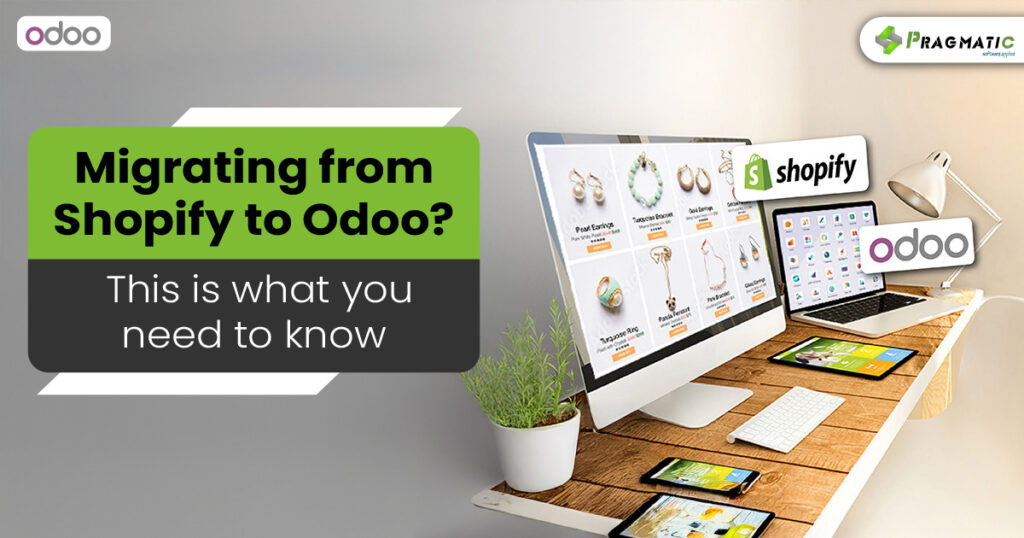

For eCommerce businesses entrenched in Shopify, the idea of migrating to a new platform like Odoo often sparks both excitement and apprehension. On one hand, there’s the promise of enhanced scalability, full customization, and streamlined operations. On the other, there are valid concerns about disruption, data integrity, and how employees and customers will adapt.
Odoo 18 provides an all-in-one solution that integrates ERP, CRM, sales, inventory, and eCommerce functionalities under one roof. For businesses outgrowing Shopify’s limitations, Odoo 18 offers an exciting opportunity to unlock new efficiencies without the recurring cost burden of third-party apps.
The first step in any migration journey is understanding why Odoo is a better fit for your business. Engage with your team to evaluate pain points—are you struggling with inefficient app integrations, insufficient reporting, or subscription fatigue? Ensure Odoo 18’s modules directly address these gaps by focusing on your vision for growth.
Migrating your data—products, orders, customer records—is a crucial step. Mistakes during this stage can cause operational problems and even customer dissatisfaction. Use reliable tools to export and clean Shopify data, then map them accurately to Odoo’s fields. Automating this process with an Odoo Shopify Connector reduces errors and saves time.
Not every tool in your Shopify ecosystem will translate directly to Odoo. Identify which apps are compatible or replaceable. It’s worth exploring Odoo modules as native, integrated alternatives to avoid high customization costs.
Don’t let migration hurt your search rankings. Losing your Google position during migration can erode traffic and sales. Keep SEO in focus, ensuring URL structures, metadata, and redirects are optimized. Use tools like Google Search Console to monitor the impact closely post-migration.
Before doing anything, secure your current data as a backup. Export product catalogs, customer information, and orders from Shopify. Save these as CSV files and store copies safely.
Example: Export a product list with details such as SKUs, prices, and inventory levels. This backup ensures that even if something goes wrong, you won’t lose critical business data. Save files on both cloud storage and external hard drives for redundancy.
Decide on hosting—cloud-based (easier to manage) or on-premise (more control). Install necessary modules like eCommerce, CRM, and Inventory Management. Customize workflows to reflect how your business operates.
Example: If your Shopify store had an order approval system, replicate it in Odoo using its workflow automation feature. Odoo’s modular architecture makes this straightforward, offering prebuilt templates too.
Import your Shopify data into Odoo using either import tools or connectors like the Odoo Shopify Connector. Map essential data fields—e.g., product SKUs and customer profiles—carefully to match Odoo’s structure.
Example: If a Shopify product is tagged as “Men’s T-Shirts,” ensure it is migrated under the correct category in Odoo. Start with a trial migration to verify everything appears correctly in a test environment.
This stage ensures your system works perfectly before launching. Test product listings, order flows, and integrations like payment gateways. Simulate real-world scenarios like placing an order.
Example: Ask team members to perform mock purchases in Odoo’s test environment. Verify that customer-specific pricing, shipping methods, and order statuses work as expected.
Set up payment gateways (e.g., Stripe or PayPal), shipping options (e.g., FedEx or local carriers), and automation rules in Odoo to streamline tasks.
Example: Automate inventory updates when a sale is processed, or set up email notifications for abandoned cart recovery—features Odoo supports natively without third-party apps.
Launch your new Odoo store while carefully monitoring its performance. Use Odoo’s built-in analytics tools to track sales, traffic, and transactions. Fix any bugs quickly by gathering feedback from users or customers.
Example: After going live, monitor if your product pages load correctly and if customer orders flow seamlessly through your inventory and CRM systems. Look for unusual traffic drops to address SEO issues early.
By following these outlined steps, your migration from Shopify to Odoo 18 becomes a structured and problem-free journey, ensuring your business operates smoothly through the transition.
Before moving your complete setup, run a trial using a small data set to check for errors. This is where a sandbox environment is invaluable for identifying and fixing potential issues.
If your business needs are complex, partnering with Odoo-certified developers ensures your migration avoids missteps and delivers a system that scales smoothly.
Keep Shopify operational alongside Odoo for a short transition phase. Compare results and fix integration points before fully switching over.
Test your sales flows, inventory control, CRM syncing, and analytics thoroughly. Debugging should be a structured, step-by-step process with clear tracking.
The Odoo developer and user community is a rich resource. Tap into forums, guides, and shared tools to navigate technical issues and access valuable insights.
Odoo 18 is not just a migration from Shopify—it’s an evolution of how your eCommerce business operates. The platform’s flexibility, affordability, and robust features make it the ideal choice for businesses ready to scale beyond Shopify’s limitations.
Plan, test, and execute your migration with precision. Address challenges by leveraging trial migrations, professional expertise, and community support. Done right, this transition will position your business for significant long-term growth.
Start planning today and transform your eCommerce operations into a system built for success.
Leave a Reply
You must be logged in to post a comment.